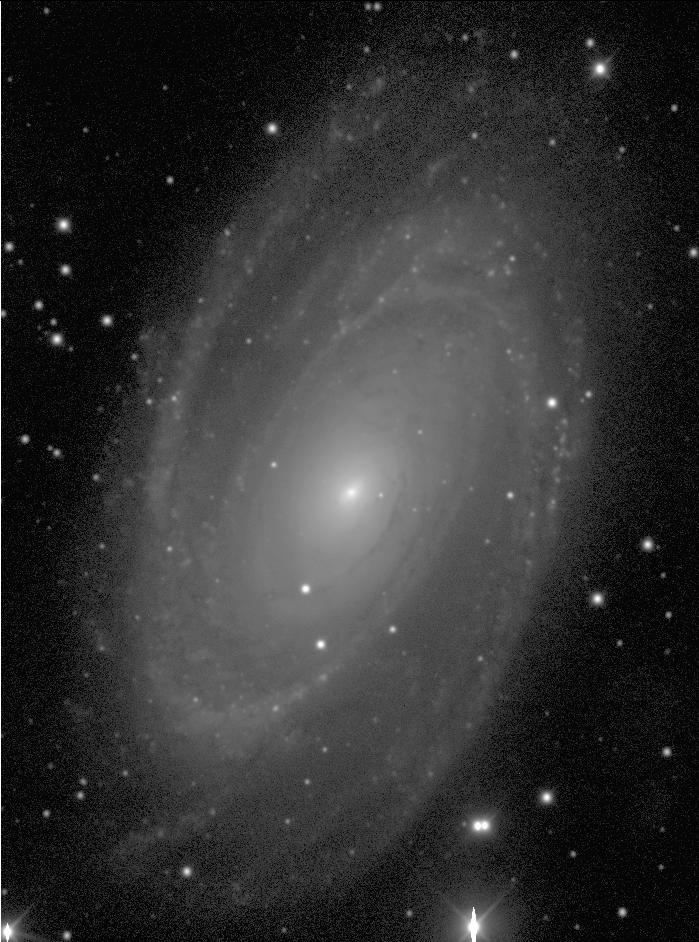

De Vaucouleurs Atlas Type: SA(s)ab
Filter: B
Telescope: USNO 1.0-m
North up , East left
Field Dimensions: 15.8 x 21.3 arcminutes
RC3 Type: SA(s)ab
RSA Type: Sb(r)I-II pec
Surface Brightness Range Displayed: 16.5-26.0 mag per square arcsec
Absolute Blue Magnitude: -21.1
Elmegreen Spiral Arm Class: AC12
De Vaucouleurs Atlas Description:
NGC 3031 , M81 is one of the most well-studied galaxies in the sky. It is also one of the most regular known spirals and has been analyzed across a broad spectrum of wavelengths.
From a classification point of view, M81 is a very good example of VRHS type SA(s)ab. The basis for this classification is the very large bulge, and the general tightness and only light patchiness of the spiral arms. It is clearly a ``late" Sab, that is, more Sb than Sa, because the arms are fairly open for a typical Sab. Although the two main arms wind more than 180o, neither arm can be traced into the bulge-dominated area. Here an ILR may prevent the propogation of the spiral density waves .
The large bulge makes determination of the near side of M81 straightforward. The dust lanes are better defined on the west side, especially inside the spiral. The ones that arc like the galaxy's arms are probably in the plane of the disk, and indicate that the west side is the near side. These lanes are shown especially well in the B-I color index map. That the asymmetry is due to tilt, and not an asymmetric dust distribution, is supported by the appearance of inner dust lanes on the east side as well. These appear as widely distributed as those on the west, but are muted because they are viewed through the bulge, rather than in front of it. In conjunction with the HI velocity field of Rots and Shane (1975), the arms of M81 are trailing.
Near-infrared observations have recently revealed a small central bar in M81 (Elmegreen, Chromey, and Johnson 1995). This feature is actually visible even in the atlas B-band image. The most exciting near-IR observations of M81 were made with the Infrared Camera Array (IRAC) on the Spitzer Space Telescope (Willner et al. 2004). In an 8 micron band, after correction for stellar background radiation, the spiral structure of M81 is revealed in the dust, and complex structure is seen thoughout the disk. This image is reproduced here, with permission.
M81 is the dominant member of a small group of nearby galaxies, about 3.7 Mpc distant (Karachentsev et al. 2002). The group includes the peculiar galaxies M82 and NGC 3077 , as well as a small Sc galaxy and numerous dwarfs.